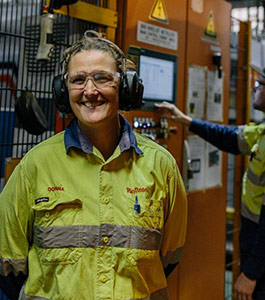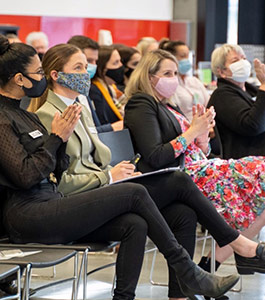You’re probably familiar with the term diversity – it permeates every aspect of our lives and we encounter it multiple times during the day. But what is workplace diversity specifically? Workplace diversity refers to the mixture of people in an organisation…all the differences between people in how they identify in relation to their:
- Social identity (Aboriginal and/or Torres Strait Islander background, age, caring responsibilities, cultural background, disability status, gender, religious affiliation, sexual orientation, gender identity, intersex status, and socio-economic background) and
- Professional identity (profession, education, work experiences, organisational level, functional area, division/ department, and location)1.
These differences shape every individual that works in your organisation – they will have their own unique qualities, quirks, strengths and weaknesses. It also influences how every individual that works in your organisation potentially perceive them and treat them.
Our workplaces are reflective of the diversity within Australia today. Culturally, almost half of our population are first or second generation Australians and nearly 3% of our population is comprised of Indigenous Australians2. Over half of Australia’s population are female, who make up nearly 50% of the Australian workforce, whereby 68% identify as serving in primary carer positions 3. Over 6% of Australians identify as having a disability, over 8% having a religious affiliation other than Christianity, 81% access flexible workplace arrangements4 and around 11 in 100 Australians identify as having a diverse sexual orientation, sex or gender identity 5. These statistics reflect only a minority of the unique differences in each person who currently work in your workplace or may gain employment within your organisation in the future (consider neurodiversity, personality classifications, socio-economical influencers and age variations!). It is vital that organisations understand the diverse qualities brought to the table by each employee.
The Australian legal system caters for the growing diversity needs within Australian workplaces to ensure diversity is protected and not discriminated against. Employers are legally required to comply with Federal Legislation (Age Discrimination Act 2004; Australian Human Rights Commission Act 1986; Disability Discrimination Act 1992; Racial Discrimination Act 1975 and the Sex Discrimination Act 1984) as well as anti-discrimination or equal opportunity law enforced by state and territory agencies6. The onus is therefore on business owners and their management to ensure their workplaces are free from discrimination, harassment and bullying to protect and support all employees.
Truly creating workplace diversity goes beyond simply acknowledging differences and complying with legislation – it embraces the differences of each employee, values the unique qualities in each individual and creates an environment where all members feel supported and included.
Watch this short video to gain a better understanding of diversity in the workplace – https://tinyurl.com/y2ja2dhh.
You may understandably be feeling overwhelmed with these statistics and requirements, particularly if your workplace does not currently have a diversity plan or anti-discrimination policy. It is therefore important to understand why bringing about a diverse environment within your workplace can benefit your business, as well as being aware of the barriers in bringing about change. Understanding the why will allow you to focus on how to implement change. This will be covered in next week’s topic “Barriers and Benefits to Diversity Improvements”.
Thank you for reading, and we hope you keep following our blog series on Diversity in the Workplace.
- https://www.dca.org.au/di-planning/getting-started-di/diversity-inclusion-explained accessed 26/8/20
- https://www.abs.gov.au/ausstats/abs@.nsf/Lookup/by%20Subject/2071.0~2016~Main%20Features~Cultural%20Diversity%20Data%20Summary~30 accessed 26 Aug 20
- https://humanrights.gov.au/our-work/education/face-facts-gender-equality-2018 accessed 26 August 20
- https://www.abs.gov.au/websitedbs/Corporate.nsf/home/Diversity+and+Inclusion accessed 26 August 20
- https://humanrights.gov.au/our-work/education/face-facts-lesbian-gay-bisexual-trans-and-intersex-people accessed 26 Aug 20
- https://humanrights.gov.au/sites/default/files/GPGB_quick_guide_to_discrimination_laws_0.pdf?_ga=2.110767557.1789585216.1598417087-952955801.1597666736 accessed 26/8/20
- What is workplace diversity? Inclusion and diversity in the workplace | Training Video – https://www.youtube.com/watch?v=DVasYQ_fND8 accessed 26/8/30.





